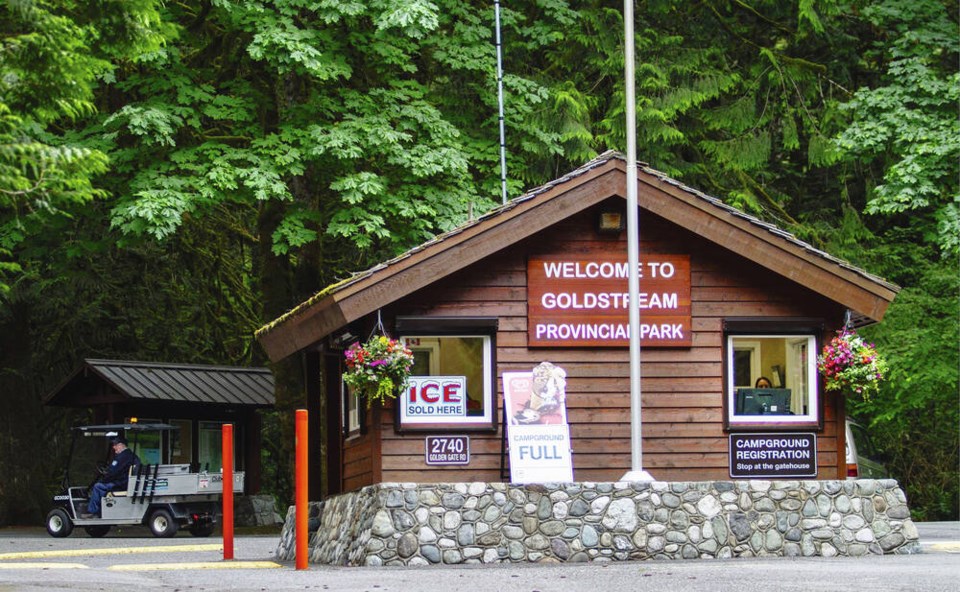The campground at Goldstream Provincial Park is closed for most of this month while a contractor removes “danger trees” before the camping season.
The Ministry of Environment said a detailed risk assessment of the thousands of trees in the campground this year identified 91 that required either removal or pruning to ensure safety for campers. Operators of B.C. Parks are required to complete tree audits on a regular basis, usually during the spring, using certified assessors to find trees that pose a safety hazard.
They are trained to identify trees that may appear healthy, but are at risk of falling and causing injuries or property damage.
In June 2022, during the peak of camping season, a large fir tree fell on a family’s car, crushing the vehicle’s back end. The tree’s longer branches brushed the tent a few metres away where the family was sleeping. No one was hurt, but the family was shaken by the experience.
A month later, another large tree suddenly fell between a campsite and playground in Goldstream. Parks officials said at the time there were no observed health issues with the tree, but returned with a certified assessor for a look at the root systems for rot.
B.C. Parks said parks are regularly assessed for hazardous trees in accordance with the Wildlife Danger Tree Assessor Program, which is certified by WorkSafeBC.
Much of the work at Goldstream is expected to be completed by the end of the month. The upper campground and 13 first-come-first-serve campsites in the lower campground will be closed, but campsites 1-6 were expected to reopen to the public Friday for spring camping.
The Capital Regional District is also conducting danger-tree surveys in its 33 parks and four regional trail systems on Southern ┬ķČ╣┤½├Įė│╗ŁIsland and the Gulf Islands.
Devon Paige Smith, spokeswoman for the CRD, said it does both danger and wildlife tree audits, which were expected to start Friday and continue through to the end of May. She said those assessments continue with periodic ones through the year.
Danger trees, live or dead and regardless of size, that present hazards to park users are a priority. Wildlife trees dead or live that have special characteristics that provide valuable habitat are preserved with safety in mind, the CRD says.
Smith said all wildlife and danger tree assessments are conducted by CRD staff who are certified as assessors by the University of Northern British Columbia.
She said, however, that visitors need to take responsibility for their own safety by being prepared for possible hazards and rapid weather changes. “Remember to assess your surroundings, know your skill levels, and always exercise caution, especially in remote areas where it could take several hours for emergency services to respond.”
>>> To comment on this article, write a letter to the editor: [email protected]



